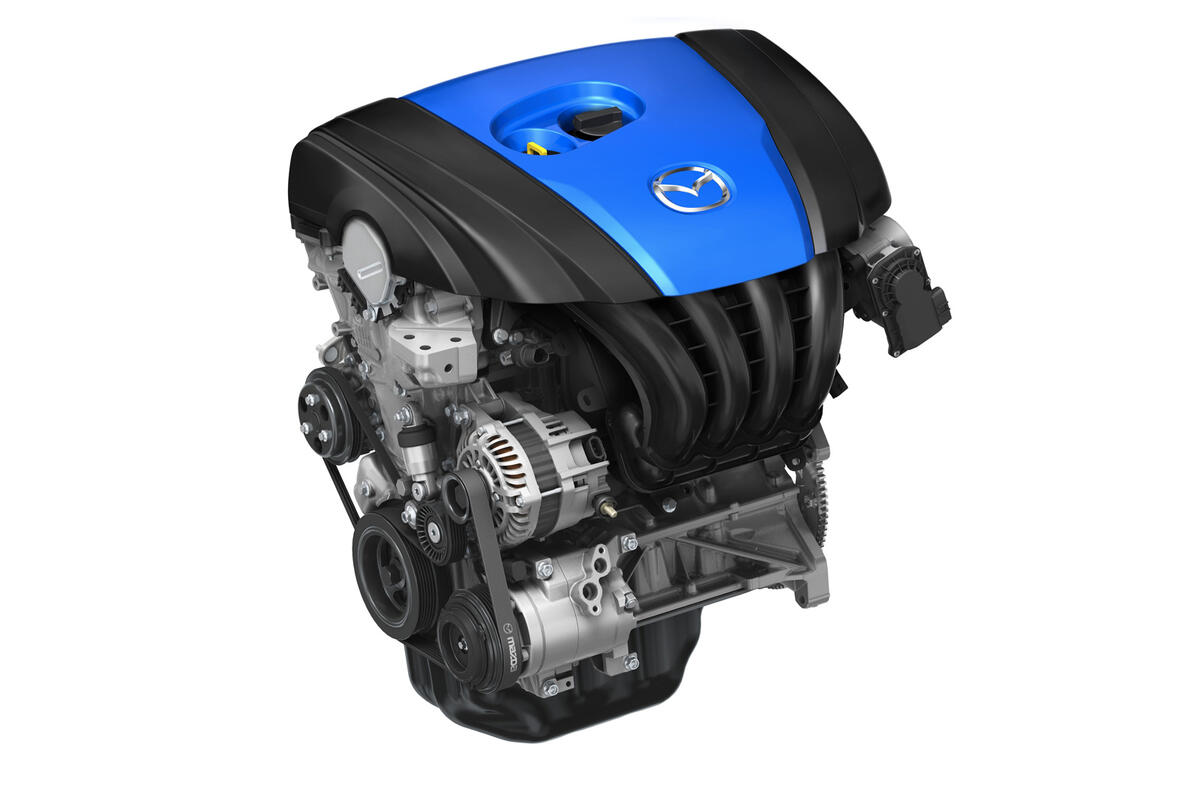The next generation of Mazda's petrol-powered models are likely to feature a 30 per cent increase in real-world economy thanks to new engines with diesel-like combustion technology.
So efficient is its latest internal combustion engine technology, the Japanese firm claims that it could even eclipse pure electric cars for well-to-wheel CO2 emissions, without adding expensive and heavy hybrid or plug-in hybrid components.
The firm has already stated it has no plans to launch hybrid models in Europe before 2020 as it believes it can meet strict upcoming CO2 emissions reduction targets without adopting hybrid or all-electric technology.
Currently in development in Japan, the innovative new engine key to the strategy is known as SkyActiv-G Generation 2.
It’s a follow-up to the firm’s current SkyActiv-G Generation 1 petrol engine range, which is already among the most efficient in the world for real-world fuel economy thanks to its lightweight construction, low friction and high compression ratio of 14:1.
For SkyActiv-G Generation 2, Mazda will adopt homogeneous charge compression ignition (HCCI) and an even higher compression ratio of 18:1. The HCCI system works in a similar manner to a diesel engine, using piston compression rather than a spark plug to ignite the mixture in the chamber.
The result, alongside a 30 per cent improvement in thermal efficiency, is a 30 per cent improvement in fuel economy. Mazda claims the total well-to-wheel CO2 emissions for an unspecified ‘average’ model equipped with a SkyActiv Generation 2 engine could be brought down to around 80g/km.
The technology behind the engine is similar to that featured on Mercedes’ Diesotto powerplant. Joachim Kunz, a senior manager at Mazda’s European R&D centre, says the HCCI system “mixes diesel and petrol processes, combining the best of both parts”.
In simple terms, the system allows a petrol engine to match and even surpass the efficiency of a diesel engine. It also eliminates harmful NOx emissions.
Kunz concedes there are problems to overcome, specifically HCCI's ability to work only under low loads at present. Mazda has so far got the technology to work on loads of up to around 50 per cent.
For this reason, the engine retains spark plugs for spark ignition under heavier loads, at which point a richer fuel-air mixture is used for combustion.
Kunz says Mazda is investigating the likes of cylinder deactivation in the engine and the firm is aiming “for the driver to not be able to tell the difference between different driving modes”.












Join the debate
Add your comment
-
Mazda 6 petrol
Very Interesting